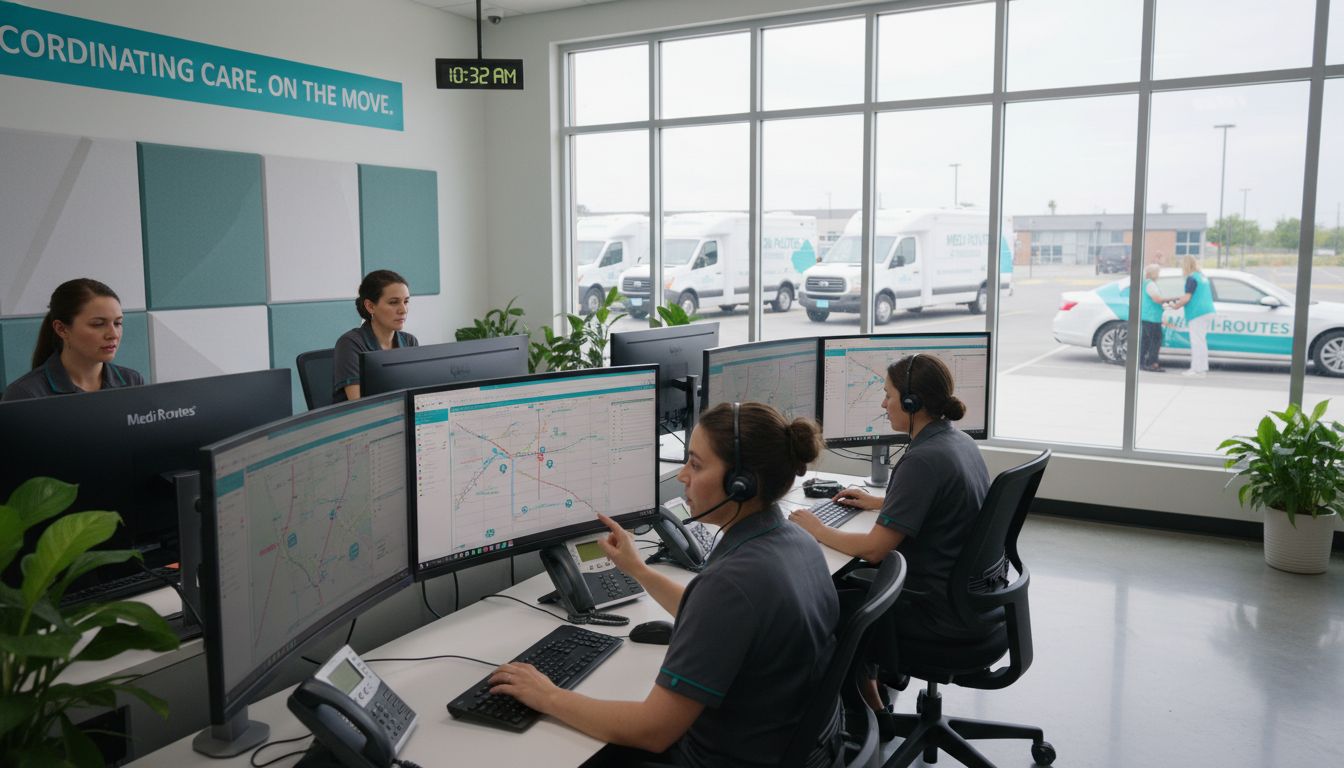Mastering Non Emergency Hospital Transport: A Step-by-Step Guide
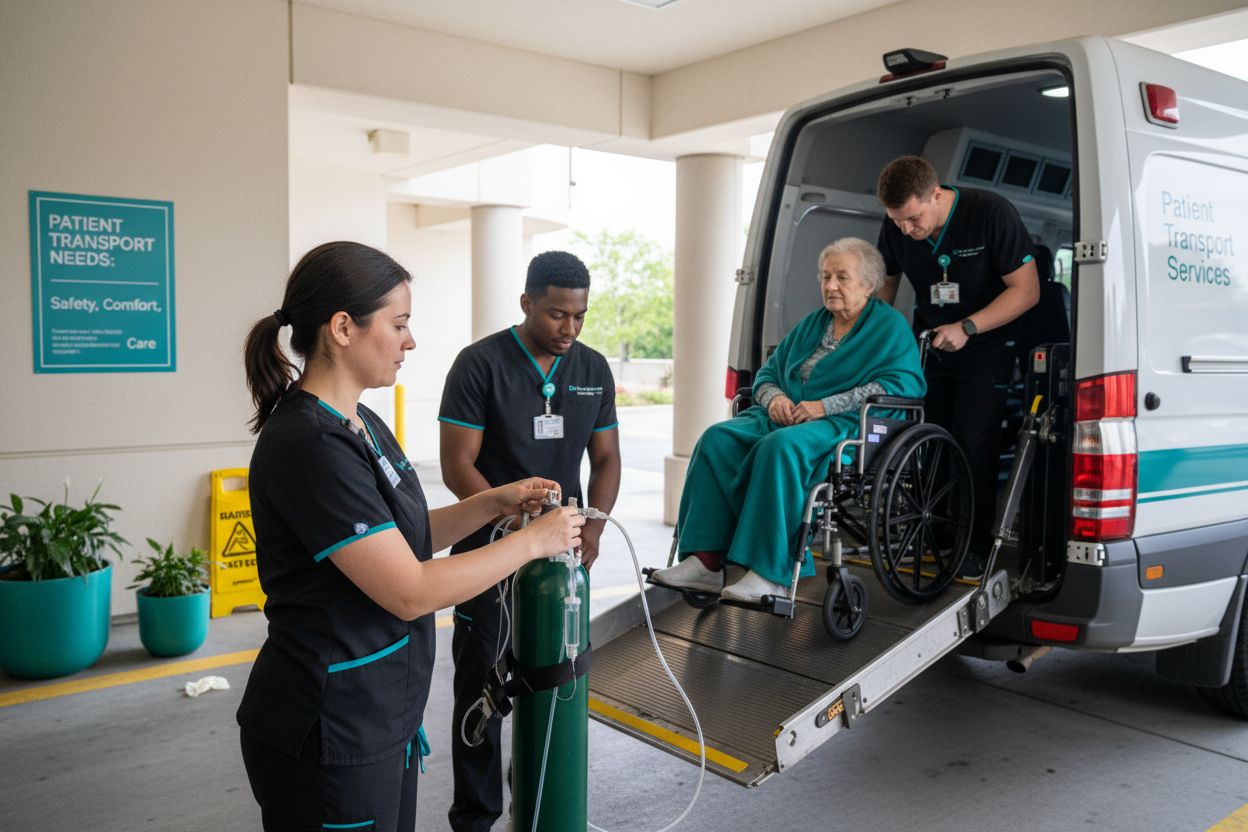
Non emergency hospital transport might seem like a simple ride from point A to point B, and yet the reality is far more complex. Some patients require specialized vehicles, medical equipment, or even emergency backup kits, and a single missed assessment detail could impact their health during transit. Most people never realize that advanced scheduling and thorough preparation are just as important as the journey itself, flipping the script on what safe patient transport really demands.
Table of Contents
- Step 1: Assess Patient Transport Needs
- Step 2: Select Appropriate Transport Provider
- Step 3: Schedule Transport Service Efficiently
- Step 4: Prepare Patient And Equipment For Transport
- Step 5: Verify Transport Completion And Follow Up
Quick Summary
| Key Point | Explanation |
|---|---|
| 1. Conduct thorough patient transport assessment | Evaluate medical condition, mobility, and transport needs to ensure safety and comfort during transit. |
| 2. Choose qualified transport providers | Verify licensing, insurance, and medical expertise to ensure providers can meet specific patient needs. |
| 3. Efficiently schedule transport service | Align patient needs with provider availability to minimize stress and ensure timely arrivals for appointments. |
| 4. Prepare patients and equipment systematically | Ensure all medical documents and equipment are ready, prioritizing patient comfort and safety before transport. |
| 5. Follow up and verify transport completion | Establish communication channels to confirm arrival and patient well-being, while documenting transport quality. |
Step 1: Assess Patient Transport Needs
Successful non emergency hospital transport begins with a comprehensive patient needs assessment. This critical first step determines the appropriate transportation method, ensuring patient safety, comfort, and medical stability during transit. A thorough evaluation prevents potential complications and aligns transport resources with individual patient requirements.
The assessment process involves multiple key dimensions of patient medical status and mobility. Medical professionals must first examine the patient’s current health condition, identifying specific transportation challenges. This includes reviewing recent medical records, current treatment plans, and understanding the patient’s physical limitations. Critical medical factors include oxygen dependency, mobility restrictions, potential need for specialized medical equipment, and risk of complications during transport.
Learn more about patient transport considerations to understand the nuanced aspects of medical transit planning. Practitioners should conduct a detailed functional assessment that evaluates the patient’s ability to move independently, transfer between surfaces, and tolerate different transportation configurations. Some patients might require wheelchair accessible vehicles, stretcher transport, or specialized ambulance services with advanced medical monitoring capabilities.
Physical assessment goes beyond immediate medical needs. Transportation planners must consider environmental factors such as anticipated travel distance, road conditions, and potential stress on the patient’s medical condition. Patients with cardiovascular issues, respiratory challenges, or recent surgical interventions require more meticulous transport planning. Consulting directly with the patient’s primary care physician or specialist can provide invaluable insights into specific transportation requirements and potential medical risks.
Documentation becomes crucial during this assessment phase. Healthcare providers should create a comprehensive transport assessment form that captures:
- Patient’s current medical status
- Required medical equipment
- Mobility limitations
- Potential emergency intervention needs
- Recommended transport vehicle type
Successful completion of this step means having a clear, detailed understanding of the patient’s unique transportation needs. The assessment should provide enough information for transport coordinators to select the most appropriate vehicle, medical support level, and route strategy. Thorough preparation minimizes potential medical risks and ensures a smooth, safe patient transfer process.
Step 2: Select Appropriate Transport Provider
Selecting the right non emergency hospital transport provider is a pivotal decision that directly impacts patient safety, comfort, and overall transportation experience. This step transforms the initial patient assessment into actionable logistics, matching specific medical needs with specialized transportation capabilities.
The selection process demands careful consideration of multiple critical factors. Provider credentials become the foundational element of this evaluation. Healthcare administrators must verify each potential transport provider’s licensing, insurance coverage, and compliance with state and federal medical transportation regulations. Learn more about choosing the right NEMT solution to understand the nuanced selection criteria.
Medical compatibility represents another crucial selection dimension. Transport providers must demonstrate proven expertise in handling patient populations similar to those being transported. This means examining their fleet capabilities, medical equipment inventory, and staff training protocols. Specialized transport needs such as bariatric patient movement, oxygen support, or wheelchair accessibility require providers with specific technical and medical competencies.
Operational reliability distinguishes exceptional transport providers from average services. Evaluate potential providers based on metrics like on-time performance, driver certification levels, vehicle maintenance records, and communication protocols. Advanced providers often utilize technology platforms that offer real-time tracking, electronic medical record integration, and transparent reporting systems.
Comprehensive provider evaluation should include:
- Verifiable medical transportation licenses
- Proof of comprehensive insurance coverage
- Documented staff medical training certifications
- Vehicle maintenance and safety inspection records
- References from similar healthcare institutions
Successful provider selection means identifying a transportation partner that seamlessly bridges medical requirements with logistical efficiency. The ideal provider will demonstrate flexibility, technological sophistication, and a patient-centered approach to non emergency medical transport. By methodically assessing each potential provider against these comprehensive criteria, healthcare administrators can ensure safe, comfortable, and reliable patient transportation that meets the highest standards of medical care.
Step 3: Schedule Transport Service Efficiently
Efficient scheduling represents the critical bridge between patient assessment and actual transportation, transforming logistical requirements into actionable transit plans. This step demands precision, coordination, and strategic timing to ensure smooth non emergency hospital transport operations.
Advanced scheduling involves more than simply picking a date and time. Healthcare administrators must synchronize multiple complex variables including patient medical needs, transport provider availability, medical appointment windows, and potential clinical interventions. Discover innovative approaches to patient transportation logistics that can streamline this intricate process.
The scheduling process requires a systematic approach that prioritizes patient comfort and medical stability. Begin by cross-referencing the detailed patient assessment from previous steps with available transport provider schedules. Identify optimal time windows that minimize patient stress and align with medical facility appointment requirements. Consider factors such as patient mobility limitations, potential medical equipment needs, and recommended transit durations.
Technology plays a transformative role in modern transport scheduling. Digital platforms enable real-time coordination, allowing healthcare administrators to track vehicle availability, monitor potential scheduling conflicts, and make immediate adjustments. These systems provide transparency and reduce communication gaps between healthcare providers, transport services, and patients. Automated scheduling tools can significantly reduce administrative overhead and minimize potential human error in the booking process.
Critical scheduling considerations include:
- Confirmed medical appointment times
- Patient physical mobility requirements
- Recommended transit duration
- Potential medical intervention windows
- Backup transport options
Successful scheduling means creating a comprehensive transport plan that anticipates potential challenges while maintaining flexibility. Verification involves confirming all logistical details with the transport provider, validating patient readiness, and ensuring comprehensive communication among all involved parties. The goal is a seamless, stress-free transportation experience that prioritizes patient safety and medical continuity.
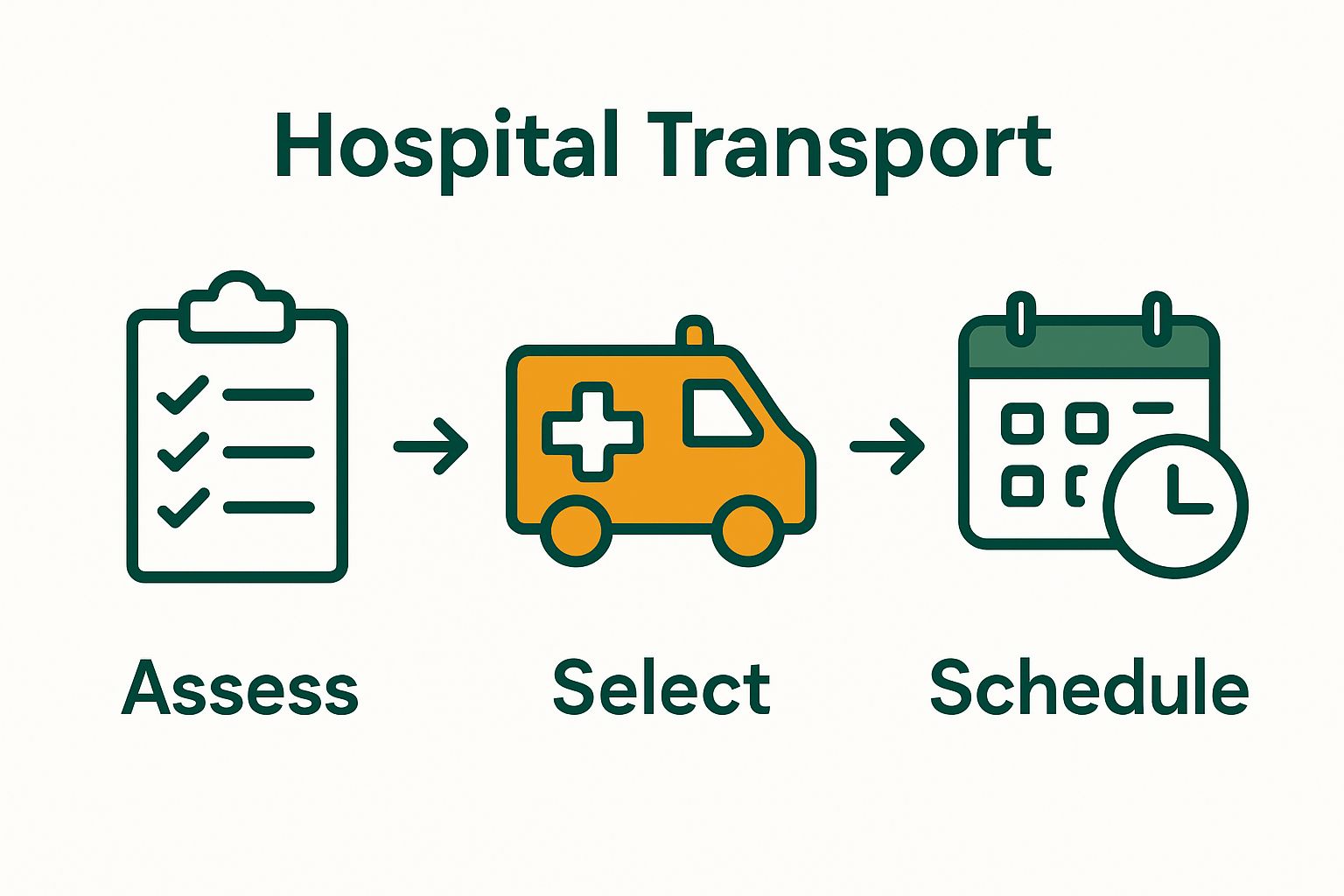
Step 4: Prepare Patient and Equipment for Transport
Preparing patients and their medical equipment for non emergency hospital transport represents a critical phase that bridges medical planning with physical transportation. This step ensures patient safety, comfort, and continuity of care during transit, transforming logistical requirements into a seamless medical journey.
Patient preparation extends far beyond simple physical readiness. Healthcare professionals must coordinate a comprehensive approach that addresses medical, emotional, and logistical dimensions of transport. Understand the nuanced aspects of patient transport to appreciate the complexity of this critical preparation stage. Medical records must be carefully compiled, including current medication lists, recent treatment summaries, and specific transport-related medical instructions. Communication becomes paramount, ensuring patients understand the upcoming transportation process and feel supported throughout their journey.
Equipment preparation requires meticulous attention to detail. Medical devices, mobility aids, and necessary support equipment must be carefully assessed, cleaned, and secured for transport. Oxygen tanks require specific securing mechanisms, wheelchairs need proper restraint systems, and portable medical monitors must be fully charged and protected during transit. Portable medical kits should include emergency backup supplies that mirror the patient’s current medical requirements, providing an additional layer of safety and preparedness.
Physical patient preparation involves multiple interconnected considerations. Healthcare providers must evaluate the patient’s current medical stability, ensure proper clothing for comfort and medical access, and prepare any necessary comfort items that might reduce transportation stress. This might include blankets, pillows, or personal items that provide emotional reassurance during medical transit.
Critical pre-transport preparation checklist includes:
- Complete and organized medical documentation
- Fully charged and secured medical equipment
- Patient comfort and mobility considerations
- Emergency medical supply backup kit
- Clear communication with transport team
Successful preparation means creating a comprehensive, patient-centered transport plan that anticipates potential challenges while prioritizing medical safety and personal comfort. The ultimate verification involves a final consultation with the patient, transport team, and medical staff, ensuring all logistical and medical requirements have been thoroughly addressed and documented.
The following table provides a concise checklist for preparing patients and equipment before non emergency hospital transport. Use it to ensure all key steps are addressed before departure.
| Preparation Step | Description |
|---|---|
| Medical documentation | Confirm all records, medication lists, and instructions are compiled |
| Medical equipment | Check devices are fully charged, cleaned, and securely fastened |
| Comfort and mobility | Ensure appropriate clothing, comfort items, and mobility aids are ready |
| Emergency supply kit | Pack backup medical supplies specific to the patient’s needs |
| Team communication | Communicate plans with patient, staff, and transport team |
| Patient stability | Verify patient is medically stable and cleared for transport |
| Final consultation | Review checklist with team and patient just prior to transport |
Step 5: Verify Transport Completion and Follow Up
Transport verification and follow up represent the final critical phase of non emergency hospital transport, ensuring patient safety, documenting service quality, and maintaining comprehensive medical continuity. This step transforms the transportation process from a logistical exercise into a patient-centered care experience.
Real-time communication becomes the cornerstone of effective transport verification. Explore advanced patient transport tracking methods to understand comprehensive monitoring strategies. Healthcare administrators must establish immediate communication channels with transport providers and receiving medical facilities to confirm patient arrival, assess physical condition, and document any transit-related observations. This verification process goes beyond simple location tracking, requiring a holistic approach to patient care and experience.
Documentation plays a pivotal role in transport follow up. Comprehensive reports should capture precise details including actual transport duration, any medical interventions performed during transit, patient comfort levels, and potential equipment or logistical challenges encountered. These records serve multiple purposes, from quality improvement initiatives to potential insurance or medical billing documentation. Detailed documentation protects both patient interests and healthcare provider accountability.
Patient feedback becomes an essential component of the follow-up process. Within 24 to 48 hours of transport, healthcare teams should conduct a brief patient interview to assess their overall transportation experience. This feedback loop provides invaluable insights into service quality, potential improvements, and patient comfort. The interview should explore not just medical logistics, but also emotional and personal aspects of the transport experience.
Key verification and follow-up elements include:
- Immediate transport arrival confirmation
- Comprehensive medical transit documentation
- Patient condition assessment
- Service quality feedback collection
- Potential process improvement identification
Successful transport verification means creating a closed-loop system that prioritizes patient safety, service quality, and continuous improvement. The final verification step involves a comprehensive review of all collected data, ensuring that every aspect of the non emergency hospital transport meets the highest standards of medical care and patient experience.
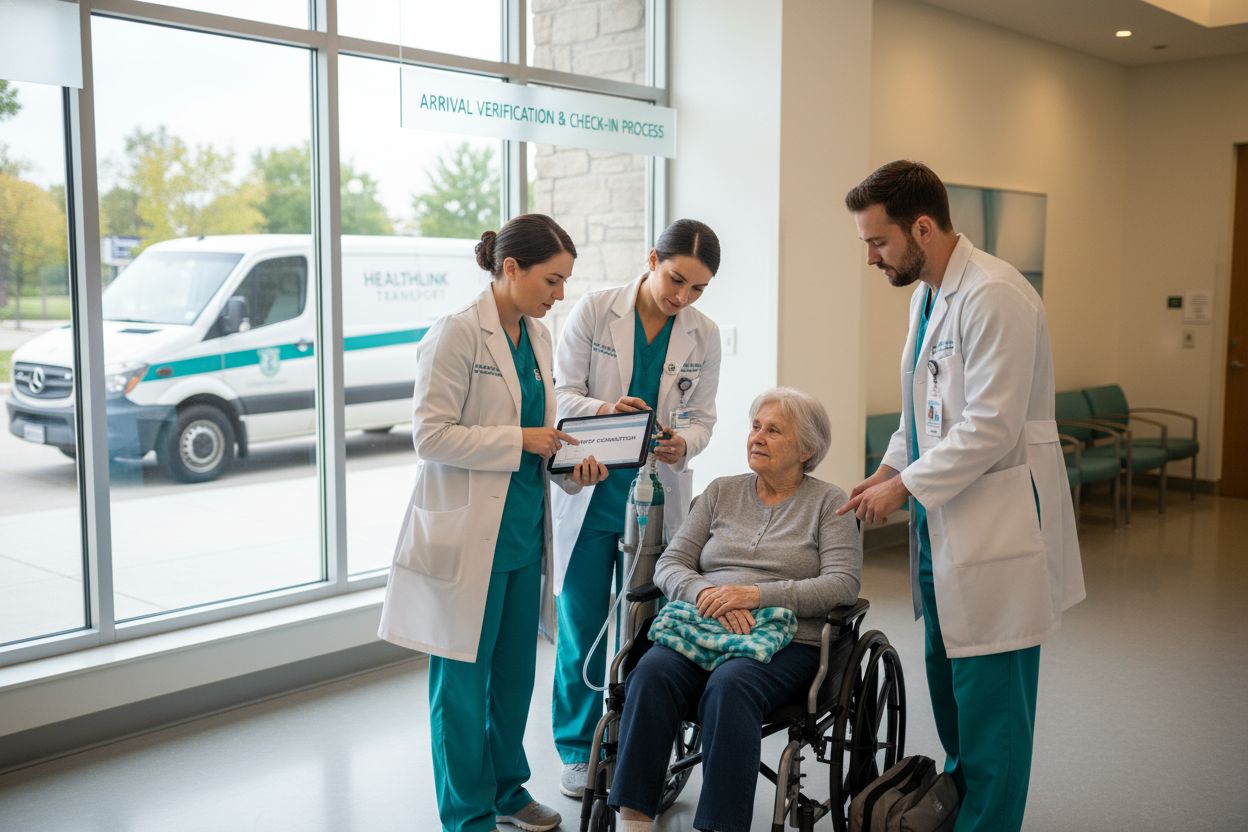
Transform Non Emergency Hospital Transport with VectorCare
Tired of complex patient transport coordination, high operational costs, or constant scheduling headaches? If the detailed steps in Mastering Non Emergency Hospital Transport left you wishing for a digital solution that anticipates delays and reduces the risk of errors, you are not alone. Many healthcare teams face frustration at each phase from assessing needs to documenting outcomes. Manual tracking and communication gaps put patient safety and satisfaction at risk, while stretched resources make it tough to optimize transport routes and vendor partnerships.
Imagine powering your non emergency hospital transport operations with real-time scheduling, automated workflows, and secure cross-team communication, all in one easy platform.
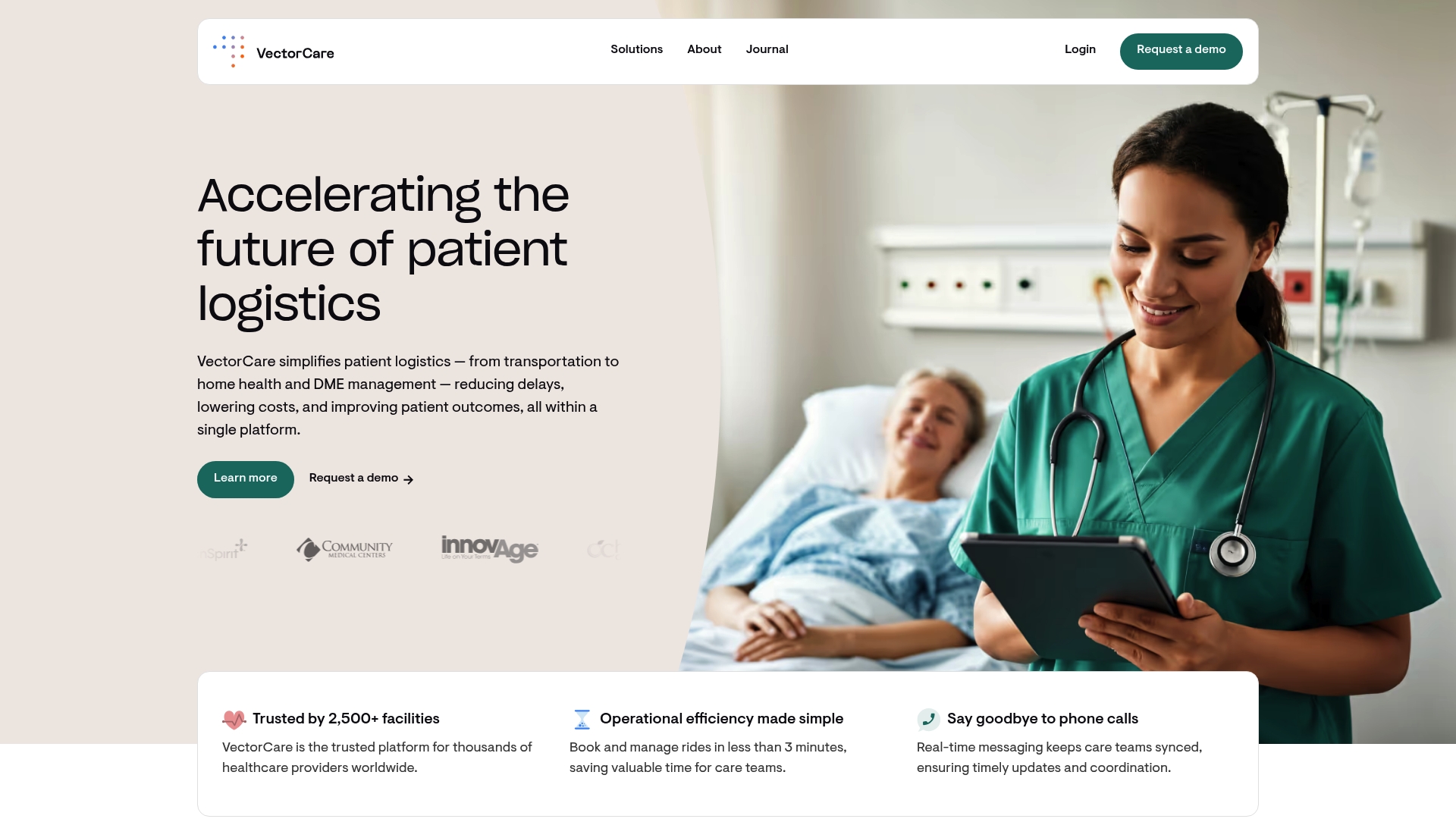
Let VectorCare help you master the complexities of patient logistics. Our integrated digital tools bring to life the standardized assessments, seamless provider coordination, and documentation highlighted in your guide. Discover how technology is enhancing patient appointment logistics and elevating patient satisfaction with real-time transport tracking. Do not let inefficiencies put your operations or patient well-being at risk. Visit VectorCare today to streamline your non emergency hospital transport process and protect every patient journey.
Frequently Asked Questions
What is the first step in planning non-emergency hospital transport?
Successful non-emergency hospital transport begins with a comprehensive patient needs assessment. This step involves evaluating the patient’s medical status, mobility, and specific transportation challenges to ensure safety and comfort during transit.
How can I choose the right transport provider for non-emergency hospital transport?
Selecting the right transport provider involves verifying their credentials, examining their medical compatibility with patient needs, and evaluating their operational reliability. Ensure they are licensed, properly insured, and experienced with similar patient populations.
What factors should I consider when scheduling non-emergency transport?
When scheduling transport, consider the patient’s medical needs, the availability of the transport provider, medical appointment times, and any potential interventions that may impact timing. Ensure you prioritize patient comfort and safety.
What preparations are necessary for patients before non-emergency transport?
Patients should have all necessary medical documentation compiled, medical equipment secured, and comfort items prepared. Proper clothing and emergency medical supplies should also be arranged to ensure a safe and comfortable journey.

